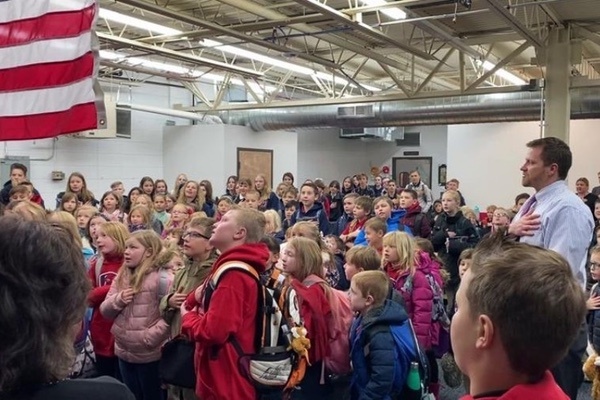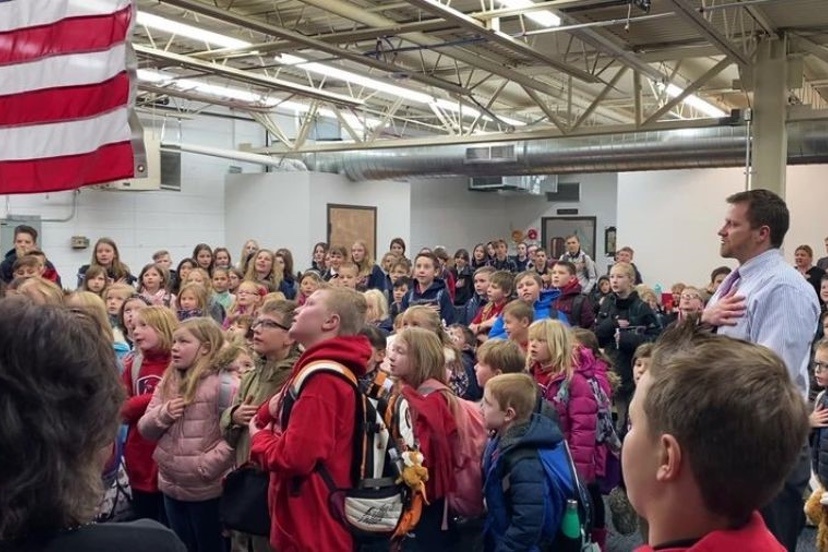Our [American] form of compulsory schooling is an invention of the State of Massachusetts around 1850. It was resisted — sometimes with guns — by an estimated eighty percent of the Massachusetts population, the last outpost in Barnstable on Cape Cod not surrendering its children until the 1880s, when the area was seized by militia and children marched to school under guard.
― John Taylor Gatto, ‘Dumbing Us Down: The Hidden Curriculum of Compulsory Schooling’, 1992.
Working as a political commentator these past 20 years at the Daily Post, I’ve slowly come to the conclusion that politics touches every aspect of modern life, including education.
Perhaps, education more than most.
Disclosure: I currently serve as a volunteer board member at Pagosa Peak Open School, but this editorial reflects only my own personal opinions, and not necessarily the opinions of the PPOS board or staff.
My beliefs about education underwent a philosophical shock when I came upon a book by award-winning public school teacher, John Taylor Gatto. In his collection of essays, titled Dumbing Us Down: The Hidden Curriculum of Compulsory Schooling, he proposed a radical view of how our compulsory public school industry is failing our students, parents, and nation.
The first chapter is the transcript of a speech Mr. Gatto gave on the occasion of his being named “New York Teacher of the Year” for 1991.
At the end of Part Two of this editorial series, I noted that what students are taught in our public schools is partly determined by the Common Core State Standards, adopted by the state of Colorado in 2010. This set of required lessons — to be taught and understood by all students, and then subjected to state-mandated standardized testing each spring — determines the ‘ranking’ of each school district and each public school in Colorado.
But I also suggested that schools teach a hidden curriculum that almost no one notices. Mr. Gatto, for example, laid out seven hidden lessons that he, and all public school teachers, teach — unintentionally and unknowingly — and that all public school students learn.
Here’s a quick summary of those hidden, but powerful, lessons.
1. Confusion.
Everything I teach is out of context. I teach the un-relating and disconnections of everything. I teach too much: from the orbiting of planets to adjectives. Curricula are full of internal contradictions and lack coherence. Kids leave school without one genuine enthusiasm or in-depth appreciation of anything. In a world where home is only a ghost because both parents work, or because of too many moves or job changes or too much ambition… I teach you how to accept confusion as your destiny.
2. Class position
I teach students they must stay in the class where they belong. If I do my job well, the kids can’t even imagine themselves somewhere else, because I have shown them how to envy and fear the better classes, and to have contempt for the dumb classes. The lesson is everyone has a proper place in the pyramid and you must stay where you are put.
3. Indifference
I teach children not to care too much about anything, even though they want to make it appear that they do. I do this by demanding students become totally involved in my lessons, exhibit enthusiasm for my teaching, compete with each other for my favor. But when the bell rings I insist they drop whatever they’ve been doing and proceed to the next class. The lesson of bells is that no work is worth finishing, so why care too deeply about anything.
4. Emotional dependency
By stars and red checks, smiles and frowns, I teach kids to surrender their will to the chain of command. Individuality is a contradiction to class theory and curse to all systems of classification.
5. Intellectual dependency
Good students wait for a teacher to tell them what to do. They learn that we must wait for others, better trained, to make the choices that will direct our lives. successful children do the thinking I assign with a minimum of resistance and decent show of enthusiasm. Curiosity has no place, only conformity. Our entire economy depends upon this lesson being learned. We’ve built a way of life that depends on people doing what they are told because they don’t know how to tell themselves what to do.
6. Provisional self-esteem
It is impossible to make self-confident spirits conform. Our world wouldn’t survive a flood such spirits, so I teach that a child’s self respect should depend on expert opinion. The lesson of report cards, grades, and tests is that children should not trust themselves or their parents, but rely on the evaluation of certified officials.
7. One can’t hide
I teach children they are always under constant surveillance. There are no private spaces for children, no private times. Students are encouraged to tattle on each other. The meaning of constant surveillance and denial of privacy is that no one can be trusted, privacy is not legitimate. Children must be closely watched if you want to keep a society under tight central control.
There are also other things we teach in school.
In colonial America, each European colony developed its own traditions around education, as did the various indigenous Native American tribes. In New England — settled as the name implies by English refugees — each colony was united by shared religious beliefs, and children were carefully taught to read, to ensure their ability to study and interpret the Bible according to the community’s ideology. In some colonies, parent who neglected to properly instruct their children could be punished.
But universal government-sponsored education in America — compulsory education — arose only in the mid-1800s, partly in response to a frightening influx of immigrants. These newly-arriving individuals and families, coming from Ireland and southern Europe, practiced a heretical form of Christianity: Roman Catholicism.
Compulsory schooling — as designed by Protestant legislators and community leaders — to the rescue. A significant part of the curriculum, even though it might not be readily apparent, taught children that they owe their primary allegiance to the Government, rather than to their (Catholic?) families.
This political training typically started at the very beginning of the day.
I pledge allegiance to the flag of the United States of America, and to the Republic for which it stands, one nation, under God, indivisible, with Liberty and Justice for all.

A (hidden?) political goal here is to create young citizens respectful of current government ideology — a goal sought by governments everywhere, no matter what political ideology they espouse.
Here’s that quote again, from the Colorado Department of Education:
Thomas Jefferson and other founders of the republic emphasized that the vitality of a democracy depends upon the education and participation of its citizens. The need for an informed citizenry was the very impetus for the creation of free public education in the United States…
An informed citizenry, that is, according to the Common Core State Standards.

